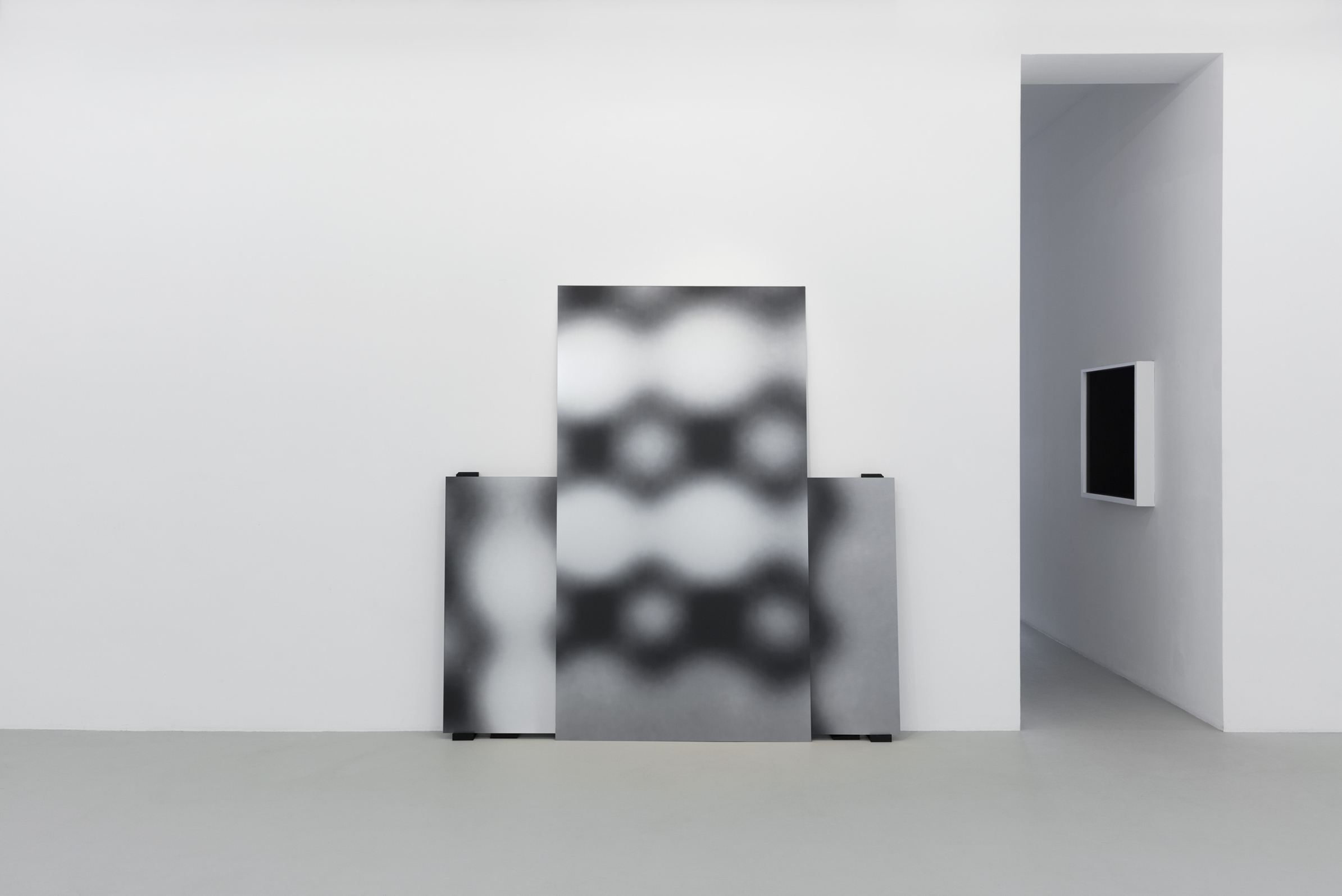Moshe Ninio, Patch
28.04 – 28.07.18 Images »

I Morgen, Duo video projection, 2:23 min
II Decor: morgen_appendix, 3 x UV LED prints on Alu-Dibond
Photo: Andrea Rossetti
Since the late 1970s, Moshe Ninio’s work has focused on the liminal existence of images that already exist in the everyday.
Such an image-object could be anything from a graphic illustration in a flight manual, an actual semi-military transmission tower that was illuminated for a national celebration, a tin can of Greek honey, oriental carpets, or in an extreme case, the booth in which Adolf Eichmann was seated during his trial in 1961.
In each of his work cycles, the ‘original’ image is an object that is suspended or subtly modified in order to return as a sealed meta-image of itself that may differ from its original function or even subvert it.
This transformation that the image undergoes, allegedly exposes a latent ‘secret’, a forensic-like truth. In their new formation the images become spectres that belong neither to the factual nor to sheer representation. They are thus put into a closed circuit that keeps them forever caught between insignificance and the mythic or even the sublime. This is most evident in the cycle Tower Attempts, originating from the transmission tower that was shown at Documenta 9 in 1992, and even more so in the Glass(s) cycle (2010-2011) that originated in the Eichmann booth.
The central work in Patch is Morgen (2010-2015). It shows a televised singing performance on West German television in 1965 almost unaltered. A slight facial failure in the act of singing is accentuated through an almost undetectable digital manipulation. This moment of truth in form of a failure, brings to the surface an act of historical suppression activated by the aesthetic.
The accompanying earlier work Hole/Patch (1991/2009) serves as a counterpart to Morgen and as its template of sorts. In this work a ruined nomadic carpet is photographically staged as prime merchandise. In Dauerwelle (2018), a third new work, a prop that appears in Morgen is reconstructed as a phantom-image in the form of a semi-holographic projection.
Moshe Ninio’s work has been shown since the early 1990’s among other places at the Israel Museum, Jerusalem, Foundation Cartier pour l’art contemporain, 1991, Documenta IX 1992, ICA, Boston, 1995, Palazzo delle Papesse, Siena 2000, Culturguest, Lisbon 2001, Centre Pompidou 2008, 2016, Passage de Retz, Paris 2013, 2015, Momenta, Montreal 2017. He held solo exhibitions, among others at the Israel Museum, Jerusalem 1990, Frac Languedoc-Roussillon, Montpellier,1996, S.M.A.K., Ghent 1998, Galerie Chantal Crousel, Paris 2000, the Santa Monica Museum of Art in 2015, the MAHJ, Paris 2016, His work is in the collections of the Israel Museum, Jerusalem, Tel Aviv Museum of Art, MUKA, Antwerp, Frac Languedoc- Roussillon, Montpellier, MUMOK, Vienna, Centre Pompidou, Paris, MAHJ, Paris and by private collections among them the Phoenix Insurance Art Collection, The Schocken Art collection and the Igal Ahouvi art Collection.
Curated by Tal Sterngast